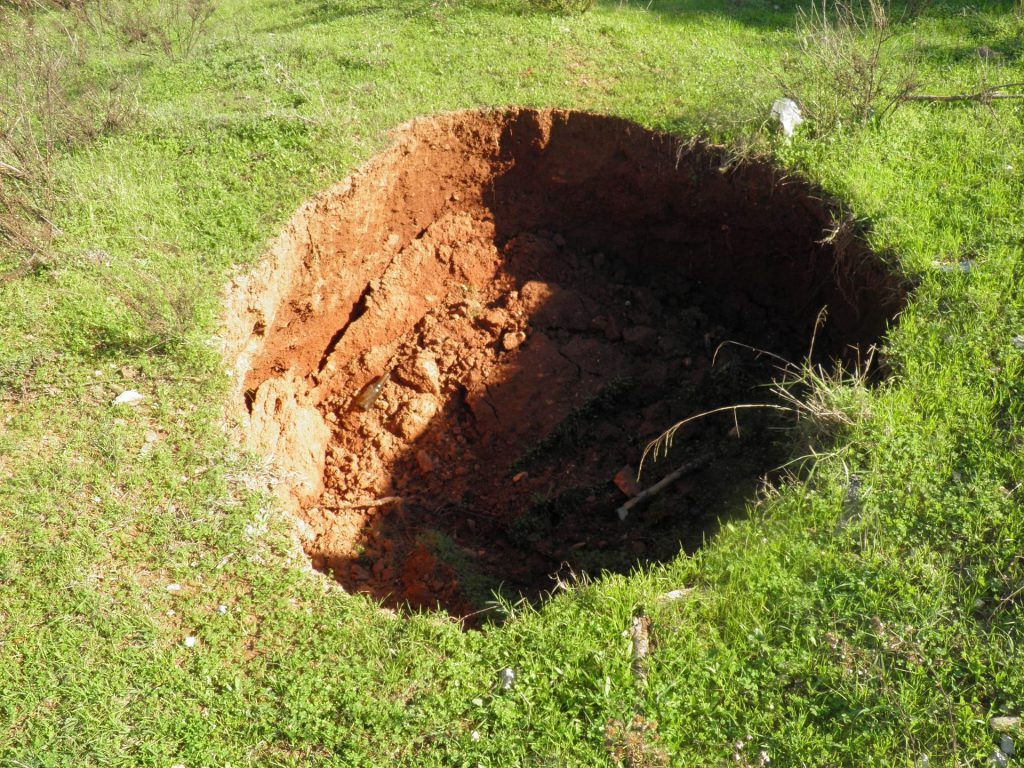
Expat Safety Tips: Sinkholes
Although possible almost anywhere you go in the world, little awareness is raised with regards to sinkholes and the dangerous risks they pose.
Whilst sinkholes vary in terms of size and severity, they can appear with little to no warning and in many cases can cause severe damage, injury and even death.
Therefore, expats and travellers alike can only benefit from being aware of high-risk areas and how to keep yourself safe.
How do sinkholes occur?
A sinkhole refers to a depression or cavity in the ground, caused when the surface layer collapses and falls in on itself.
Sinkholes can happen naturally and can also be caused by human activity. Naturally occurring sinkholes are usually more common in what is referred to as karst terrain – areas with soluble rocks such as limestone.
Over time, water erosion takes place underground, gradually breaking down and weakening the structure of the rock which is keeping the surface supported. As the rock wears away, caverns develop underground, leading to a sudden collapse of the surface area.
Man-made sinkholes can arise in built-up areas – such as towns and cities – when sewers and water mains become damaged and cause underground leaks. It is also possible for sinkholes to happen when natural drainage patterns are disrupted or changed. Other circumstances might include, abandoned mines and construction work which compromises the structure of the rock beneath.
Where are sinkholes most common?
Sinkholes have appeared in most countries, including the UK. However, there are certain areas which are more prone than others due to landscape – China, Mexico and certain parts of the USA.
Some of the biggest sinkhole in the world have been found in Papua New Guinea, Guatemala, Belize and Laos. Whereas the largest known naturally formed sinkhole, was discovered in Egypt. This sinkhole spans 75 miles in width and 50 miles in length!
Florida is particularly prone to sinkholes due to the widespread presence of limestone.
Warning signs of sinkholes
For expats buying property, its always worth ensuring a thorough survey is undertaken to not only improve your safety, but also save you money.
Whilst sinkholes may seem to happen suddenly – appearing as if from nowhere – there are some sinkhole warning signs to look out for.
However, it’s important to note that seeing just one of these signs does not necessary mean disaster is imminent. These can also be signs of general subsidence. But, if you do notice any, its worth further investigation, in order to determine and address the route cause.
Key an eye out for some or any of the following:
- New or widening cracks in the ground
- Sloping foundations
- Tilting or fallen fences and trees
- Cracks in roads or pavements
- Dips, holes and circular depressions in the ground
- Large, deep puddles appearing in the ground
- Cracks on interior walls, around door and window frames
- Dead patches of lawn or plant beds
Previous reports have also suggested that ground shakes may be heard and felt in the lead up to a sinkhole.
In some places in the USA, it is a requirement to have insurance against sinkhole, due to their prevalence.
What happens after a sinkhole?
Depending on the location and size of the sinkhole, sinkholes can be an inconvenience or have the potential to cause huge amounts of damage. Historical sinkholes have been known to swallow cars and even entire houses!
One such event, occurred in Guatemala City in 2007, when a 100-meter-deep sinkhole appeared, engulfing homes and killing three residents. The sinkhole was thought to have been caused by ruptured sewer lines.
Clearly, the repair and rebuild after a sinkhole will largely depend on the severity. However, in the worst cases where entire properties are swallowed, those affected will require temporary shelter and support.
If a property is damaged from a sinkhole, you should check to see if it is covered by your home insurance policy. Professional contractors can repair the damage, but if any part of the affected area is part of public property, you should inform the local authorities. Obviously, the specific requirements for such situations will depend on the country and location.
Discover some of Expatriate Group’s other Expat Safety Tips articles below:
